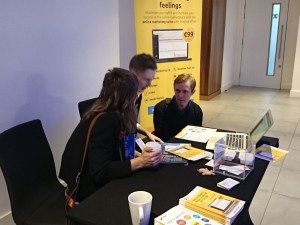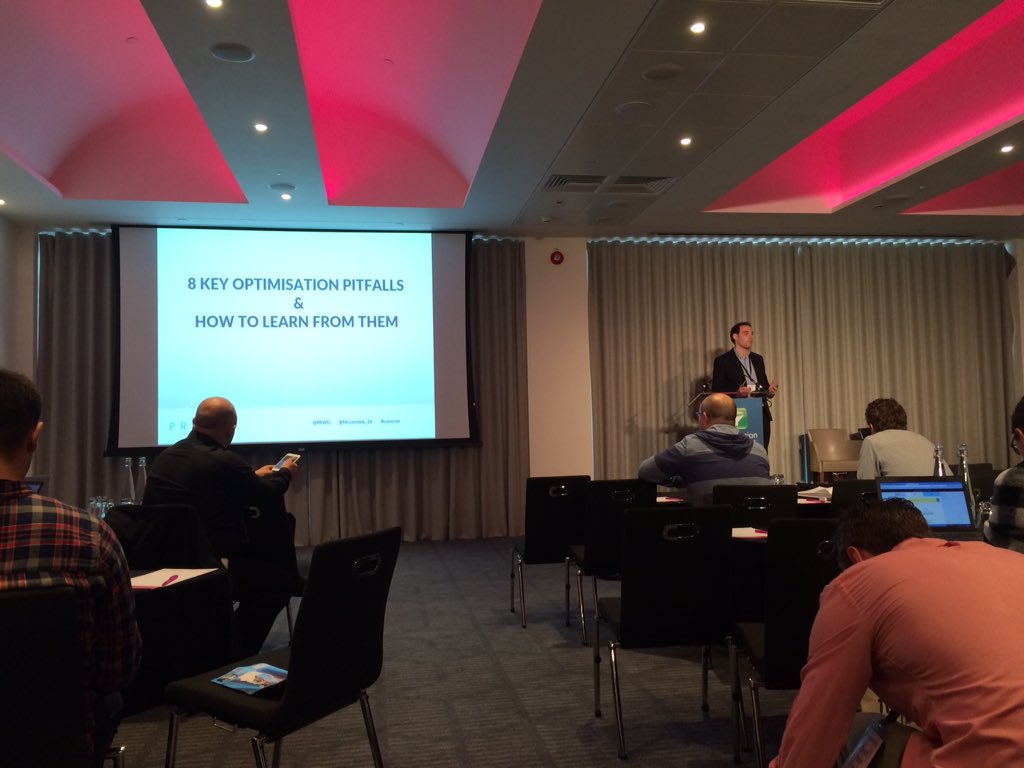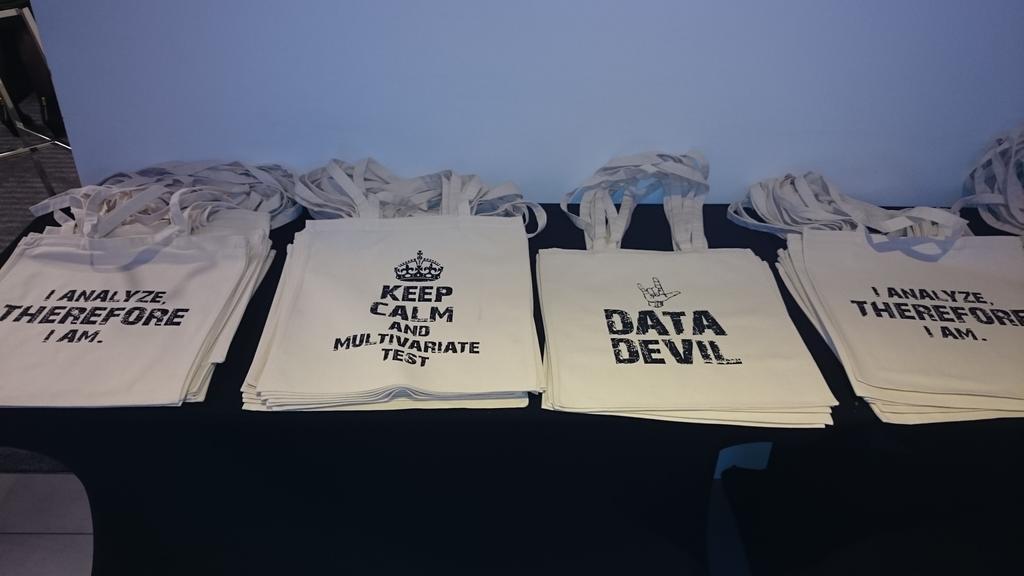XOVI jetted off to the bright lights (and rain!) of London at the end of October as a sponsor of the 2015 Conversion Conference. In addition to a colourful XOVI presence in the main hall, we took the opportunity to attend a number of presentations and talks offered by the busy conference programme.
Conversion rate optimisation
 Getting the ball rolling on day one were Conversion Factory’s Stephen Pavlovich and Craig Sullivan of Optimal Visit. The pair looked ahead at what 2016 holds for the conversion industry, asking what factors are holding it back from becoming a more recognised and influential sector. For Stephen and Craig, businesses ought to stop thinking of conversion testing as quick fix. Instead, it should approached and regarded a strategic guideline which helps to understand customers. It was a message which quickly became a key feature of #convcon 2015.
Getting the ball rolling on day one were Conversion Factory’s Stephen Pavlovich and Craig Sullivan of Optimal Visit. The pair looked ahead at what 2016 holds for the conversion industry, asking what factors are holding it back from becoming a more recognised and influential sector. For Stephen and Craig, businesses ought to stop thinking of conversion testing as quick fix. Instead, it should approached and regarded a strategic guideline which helps to understand customers. It was a message which quickly became a key feature of #convcon 2015.
Karl Gilis of AGConsult moved the discussion forward to the next stage – carrying out conversion rate optimisation (CRO) on the website itself and busting a number of myths, starting with the classic blue/red button debate. Changing the colour of a call-to-action button does not constitute a brilliant idea all on its own!
Rather, carry out empirical tests to measure quantifiable changes. How about a reassuring message to your customer next to the button, he suggested. Or why not try clear, concise bullet points to aid product comparison?
In an engaging presentation, Karl shared some of his own experiences of A/B testing. Actually, ticks are better than bullet points. Not only that, green ticks are better than black ticks! And how many? According to Karl’s research, one isn’t enough but odd numbers are better than even numbers. Such comparisons are key and reveal a lot about user behaviour.
For Karl, when it comes to optimising the layout of your page for increased conversion, less really is more. In his own words, “white space has never killed a visitor!” To sum up, he echoed the advice that the needs of the particular customer base should remain central. “Stop selling products the way you want to sell them. Sell them the way your customers want to buy them”.
But how to attract customers to your website in the first place? A common strategy is of course an e-mail marketing campaign, and this was the subject of Julius van de Laar’s presentation. He discussed the perfect subject line, and how to tie your campaign in with your social media marketing. Using the example of the Obama/Clinton US presidential election campaign, he highlighted the influence of Facebook voting in modern campaigning.
A highlight of day one was undoubtedly Luigi Reggiani – head of data analytics at Google EMEA, and therefore Google’s representative at Conversion Conference and predictably the target of a whole raft of questions from curious marketers! A burning question from the floor was whether Google is planning to integrate AB testing functionalities in any other analytics products. Luigi’s response: no immediate plans.
Top optimisation pitfalls

Moving on to day two, PRWD’s optimisation strategist Chris McCormick presented his top optimisation pitfalls when it comes to CRO. He emphasised the need to treat best practice guidelines as precisely that – guidelines. They don’t apply equally to every single business, and there are a whole range of alternative metrics, as Chris explained:
Don’t blindly copy your competitors. What works well for others is by no means guaranteed to work for you. Instead, run your own tests, look at your own data based on your own customers’ experiences.
Similarly, it’s not enough just to run a load of tests and accept the results, happy in the knowledge that your work is done! It’s not! As Chris put it, “SANITY, NOT VANITY.” Test results ought to be thoroughly analyzed. And if your sample isn’t large enough to carry out adequate evaluation, don’t be afraid to extend the test for a week or so.
Finally, Chris emphasised the importance of not judging the outcome of a test too soon. Just as it’s important not to abandon a test if conversion drops on the first day, neither should you interpret an immediate upturn as proof of success. Chris’ conclusion: Best practice and ultimate conversion rate are important metrics, but be flexible and put the customer first!
Another area where the individual needs of the customer ought to come first is in responsive design – and this was the subject of Dave Gowans’ presentation later on day two. Dave, head of conversion at conversion.com, stressed that the switch to responsive design cannot be considered a one-size-fits-all solution, nor should it be seen as a purely UX issue.
Once again, the key is to view your customer base not as a single, faceless, homogenic group but as clearly designated separate audiences. Whereas user experience on a PC isn’t likely to vary much, the opposite is true for mobile, as Dave explained using the example of thetrainline.com, the UK train ticket booking company.
Here, context is paramount. The user booking train tickets two months before he travels wants to see radically different content from the user buying a train ticket from the cab on the way to the station – “34% off when you book in advance! Great, no use to me!” In future, Dave wants to see companies place greater emphasis on personalised content, but the consensus in the room was that we’re still all some way off.
As the conference now draws to a close, there’s time to reflect on our overall experience. XOVI enjoyed a positive first appearance in the UK, introducing the all-in-one online marketing suite to a new international market for the very first time! The event ran smoothly thanks to well-organised, professional, friendly staff and all speakers were approachable and open to questions. We’re looking forward to coming back soon.
